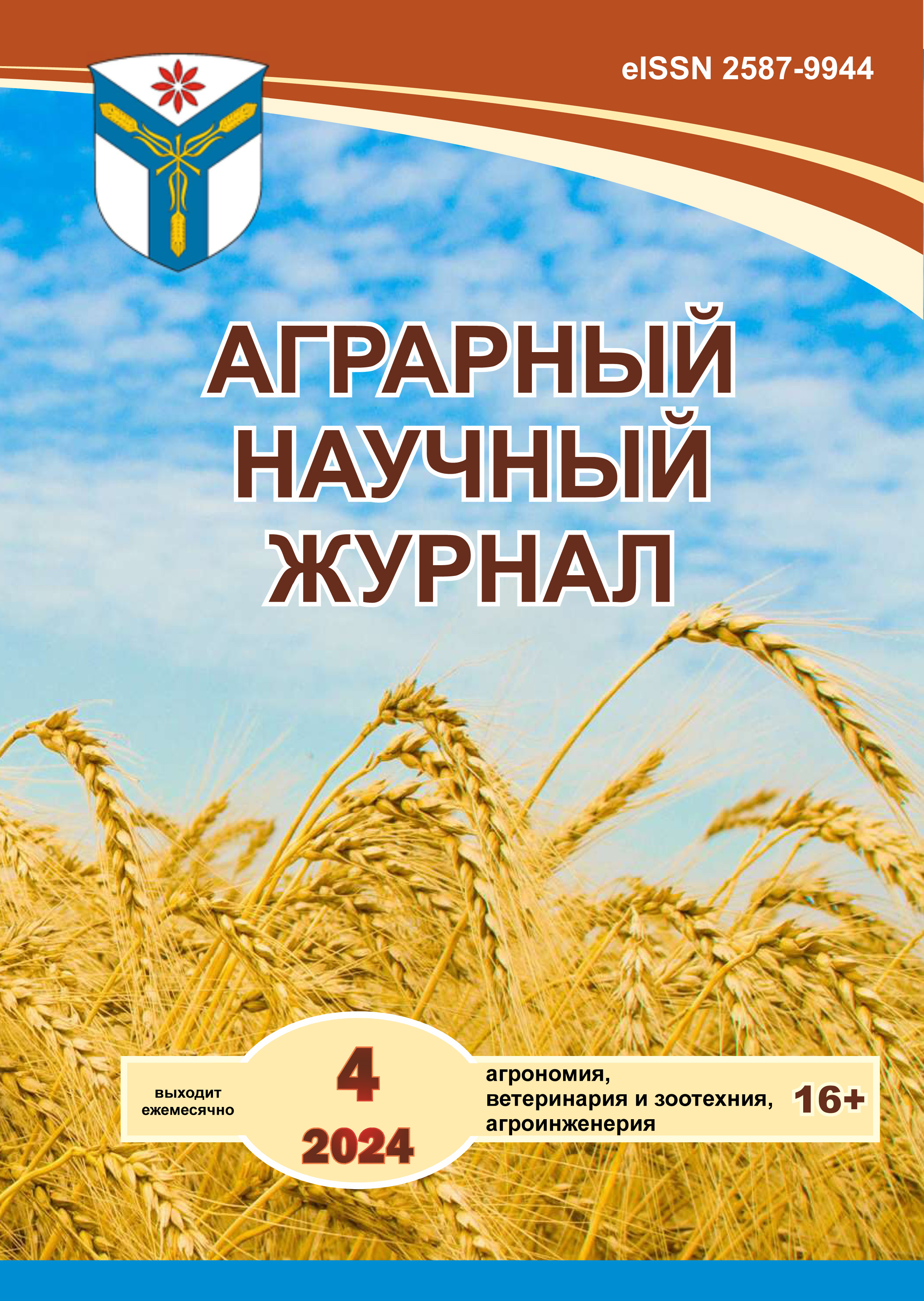Restoring the soil fertility of carbonate soils in landscape farming systems
DOI:
https://doi.org/10.28983/asj.y2024i4pp26-33Keywords:
humus, pHs, adaptive landscape farming systems, Belgorod region, fertility indicators, erosion, monitoring, carbonate chernozemsAbstract
In the extremely difficult soil and landscape conditions of the Krasnogvardeisk test site in the Belgorod region, it was possible to stop erosion losses, which contributed to an increase in the carbonate soils fertility. Despite the short period in terms of the natural rates of the soil-forming process, a statistically significant increase in the humus status of soils was established. The content of organic matter in the arable layer increased by 0.64% (abs.) on average for the site, by 0.87% (abs.) in the soils of the southern slope. In the subsoil layer, the increase ranged from 0.67 to 0.75% (abs.) depending on the relief element. The humus content in the soils of forest belts is on average slightly higher than in the space between the belts. This is caused by higher (2.5 times) rates of humus accumulation in the first period after the development of landscape farming systems. The accumulation of humus contributed to the optimization of the reaction of the soil environment. The shift in pHs values from the area of alkaline reaction, characteristic of washed away carbonate soils, to the area of neutral and close to neutral values is statistically significant. An increase in the overall soil cultivation of the Krasnogvardeisk test site is evidenced by the transition to a higher level of provision with mobile forms of nitrogen, phosphorus and potassium.
Downloads
References
FAO SOILS PORTAL https://www.fao.org/soils-portal/soil-management/management-of-some-problem-soils/calcareous-soils/ru/
Lal R., Stewart B. A. Soil Degradation. New York: Springer-Verlag, 1990.
Pimentel D., Burgess M. Soil Erosion Threatens Food Production // Agriculture. 2013. P. 443-463/ doi:10.3390/agriculture3030443
Taalab A.S., Ageeb G.W., Siam H.S., Mahmoud S.A. Some Characteristics of Calcareous soils. A review //Middle East J. Agric. Res. 2019. No. 8(1). P. 96-105.
Каштанов А.Н., Явтушенко В.Е. Агроэкология почв склонов. М., 1997. 240 с.
Котлярова Е.Г. Значение лесонасаждений в создании экологически безопасной конструкции агроландшафта // Вестник Курской государственной сельскохозяйственной академии. 2014. № 9. С. 62-66.
Крупенников И.А. Карбонатные черноземы. Кишинев: Штиинца. 1979. 101 c.
Соловиченко В.Д. Плодородие и рациональное использование почв Белгородской области. Белгород, 2005. 292 с.
Стратегия развития защитного лесоразведения в Российской Федерации на период до 2025 года, перераб. и доп. / К.Н. Кулик [и др.]. Волгоград: ФНЦ агроэкологии РАН, 2018. 36 с.
Шеуджен А.Х., Куркаев В.Т., Котлярова Н.С. Агрохимия / под ред. А.Х. Шеуджена, 2-е изд., переаб. и доп. Майкоп, 2006. 1975 с.
Экологические факторы и свойства почв склонов ЦЧР: коллективная монография: в 2 ч. Ч.1 / науч. ред. Е. П. Проценко. Курск, 2009. 145 с.
Downloads
Published
Issue
Section
License
Copyright (c) 2024 Agrarian Scientific Journal

This work is licensed under a Creative Commons Attribution-NonCommercial-NoDerivatives 4.0 International License.








